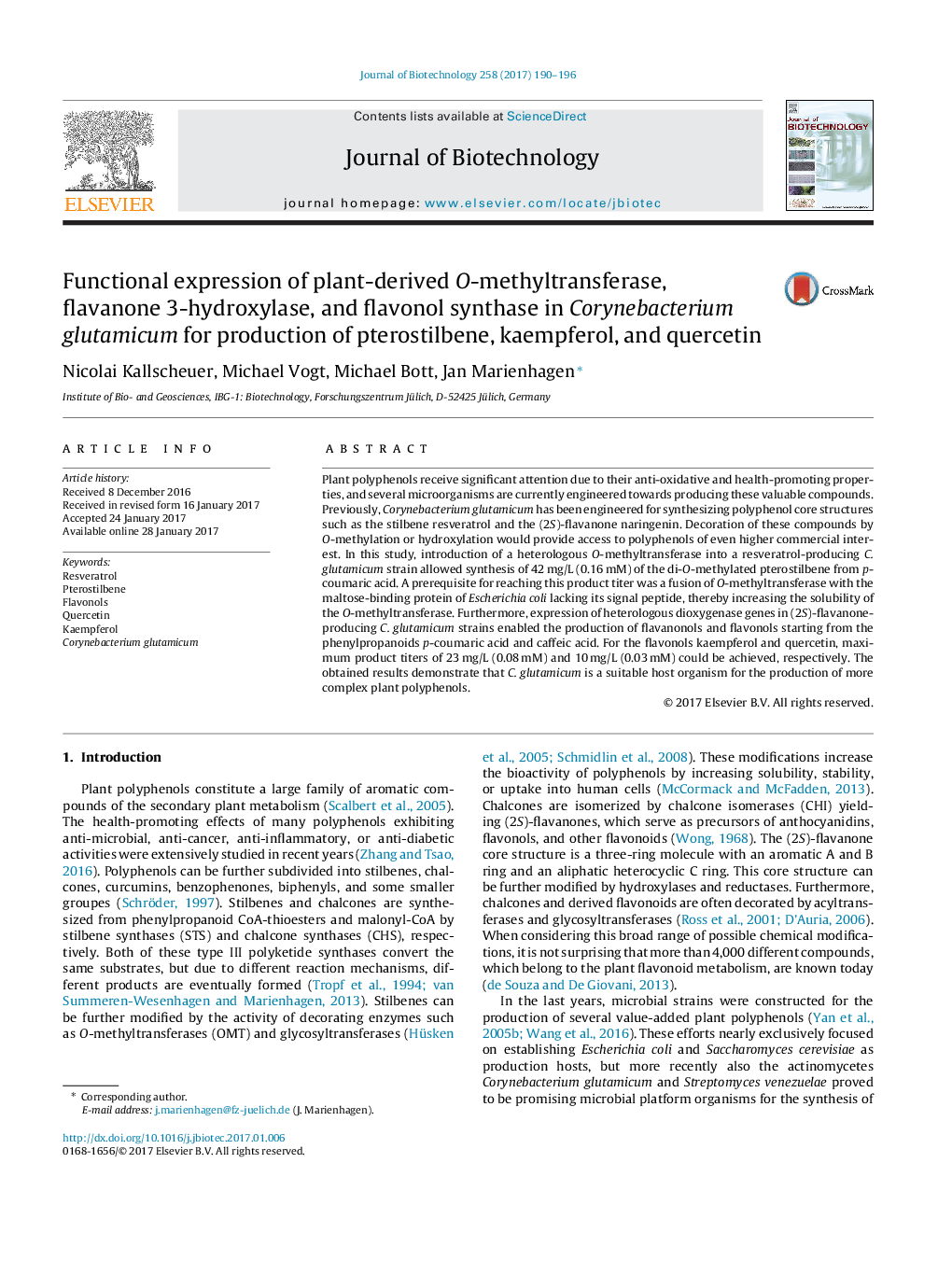| کد مقاله | کد نشریه | سال انتشار | مقاله انگلیسی | نسخه تمام متن |
|---|---|---|---|---|
| 6452056 | 1416985 | 2017 | 7 صفحه PDF | دانلود رایگان |

- Expression of an O-methyltransferase and two dioxygenases in C. glutamicum.
- Synthesis of pterostilbene, kaempferol and quercetin from phenylpropanoids.
- Highest flavonol titers achieved in microbes to date.
- C. glutamicum is a suitable organism for the synthesis of complex plant polyphenols.
Plant polyphenols receive significant attention due to their anti-oxidative and health-promoting properties, and several microorganisms are currently engineered towards producing these valuable compounds. Previously, Corynebacterium glutamicum has been engineered for synthesizing polyphenol core structures such as the stilbene resveratrol and the (2S)-flavanone naringenin. Decoration of these compounds by O-methylation or hydroxylation would provide access to polyphenols of even higher commercial interest. In this study, introduction of a heterologous O-methyltransferase into a resveratrol-producing C. glutamicum strain allowed synthesis of 42Â mg/L (0.16Â mM) of the di-O-methylated pterostilbene from p-coumaric acid. A prerequisite for reaching this product titer was a fusion of O-methyltransferase with the maltose-binding protein of Escherichia coli lacking its signal peptide, thereby increasing the solubility of the O-methyltransferase. Furthermore, expression of heterologous dioxygenase genes in (2S)-flavanone-producing C. glutamicum strains enabled the production of flavanonols and flavonols starting from the phenylpropanoids p-coumaric acid and caffeic acid. For the flavonols kaempferol and quercetin, maximum product titers of 23Â mg/L (0.08Â mM) and 10Â mg/L (0.03Â mM) could be achieved, respectively. The obtained results demonstrate that C. glutamicum is a suitable host organism for the production of more complex plant polyphenols.
Journal: Journal of Biotechnology - Volume 258, 20 September 2017, Pages 190-196